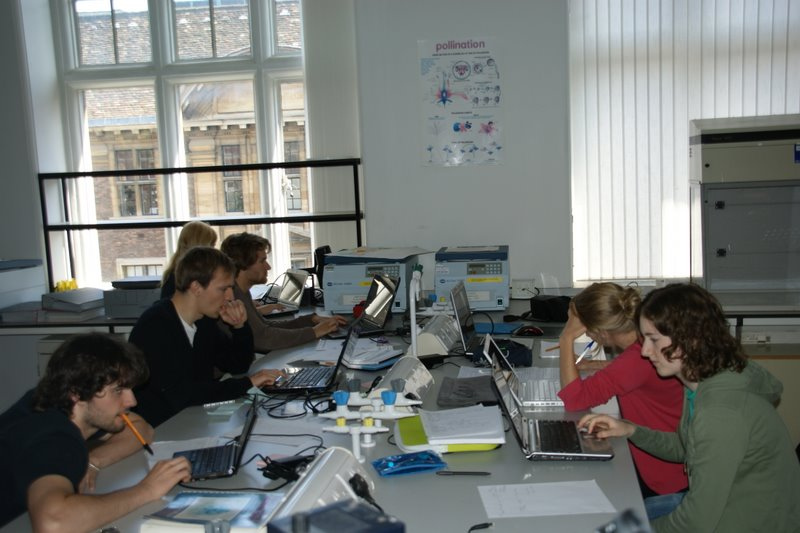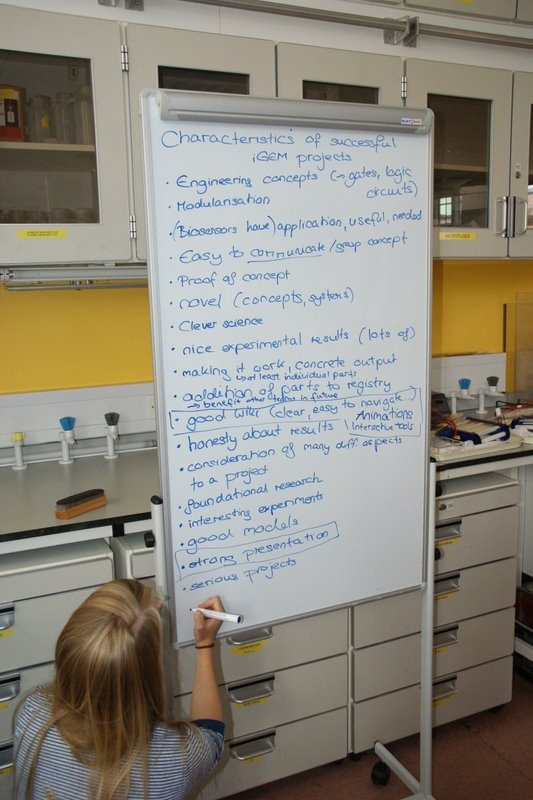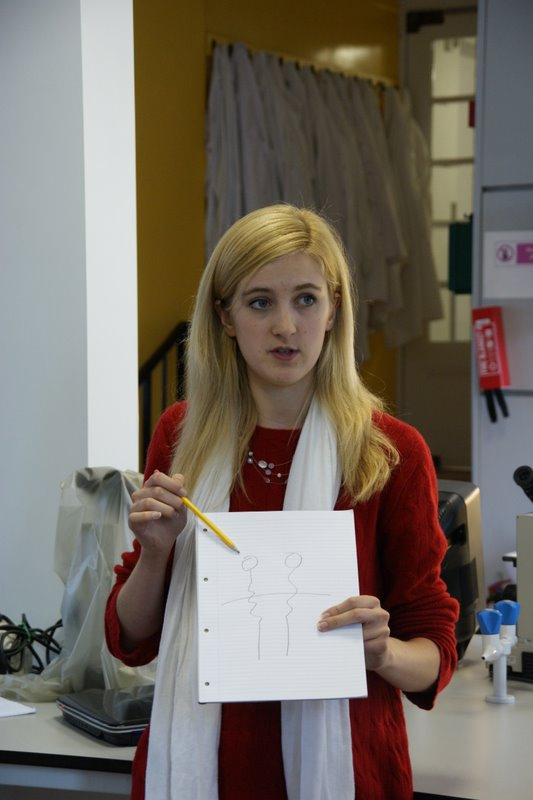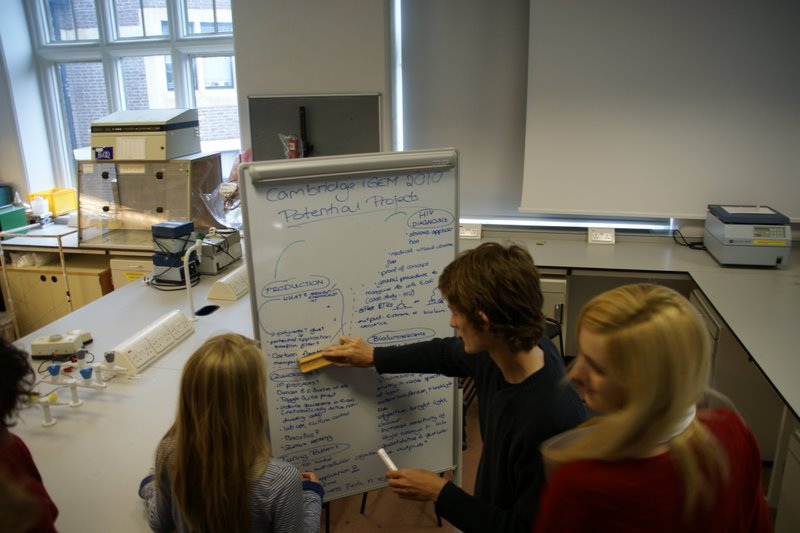Team:Cambridge/prototypeNote
From 2010.igem.org
Contents |
Monday
{{:Team:Cambridge/Templates/{{{src}}}|src=Cambridge-Postit.jpg}} We spent the morning compiling a large set of ideas, each on its own post-it-note. We categorised them and excluded those that were clearly unfeasible. If you like, you can see the long list.
In the morning we narrowed them down to a shortlist of projects.
Tuesday
We spent the morning researching the shortlisted projects and seeing a demonstration of the [http://www.techne.com/product.asp?dsl=216 Techne PCR machine] by Bibby Scientific.
In the afternoon we worked on a practical with Qiagen equipment, helped by Simon Morgan. We miniprepped DNA, and then ran it on a gel.
Wednesday
In the morning we looked at past iGEM projects and compiled characteristics of successful projects, this was a very useful exercise.
We also presented the topics we had researched in detail to each other which gave us a better sense of which areas we wanted to pursue further.
After lunch we selected 4 projects to further work on. We swapped projects so that we could research a new topic and get up to speed on it, and also provide fresh insights.
We created pages for each project idea:
Thursday
We discussed quiescence in the morning, in particular the possibility of IP issues. We concluded we should consult David Summers who holds patents in the area. We decided there was not enough for a full project in the topic. We also considered whether altering RNA structure was a realistic aim for iGEM. Bio-Luminescence and Quiescence joint project -
A functional breakdown of the project was proposed:
- Module 1 - Production of Luciferin, Luciferase and Luciferin Recovery enzyme (LRE) - these are all firefly
- Module 2 - Biosynthetic pathway for luciferin
- Module 3 - Biobricking quiescence - require a very good control system to prevent false activation, could add a conformational change to the molecule.
We discussed finding a "super" luciferase with 12x the affinity for the substrate and not for the product. The firefly systems are all eukaryotic, so we suggested that we could perhaps do this in yeast. Control of quiescence could also occur via cyclin control in yeast.
Friday
In the morning we decided to drop HIV project, due to the lack of easy signalling peptides. We continued research on Bioluminescence idea. We also set up a [http://www.flickr.com/photos/52129837@N08/ Flickr account].
Bill and Will attempted to estimate the luminosity of a bacterial colony, and compare this to the lower threshold of the human eye during scotopic vision. They used an estimate for the eye sensitivity using [http://www.telescope-optics.net/eye_spectral_response.htm].
Theo predicted the structure of Rcd using mFold, but got a different conformation to the one shown in the paper, perhaps the algorithms used on the program have changed between now and when the paper was written.
We listened to Fireflies by Owl City and concluded the lyrics make no sense.
Saturday
Peter made a physical model of the X RNA to visualise the structure
Sunday
 "
"



